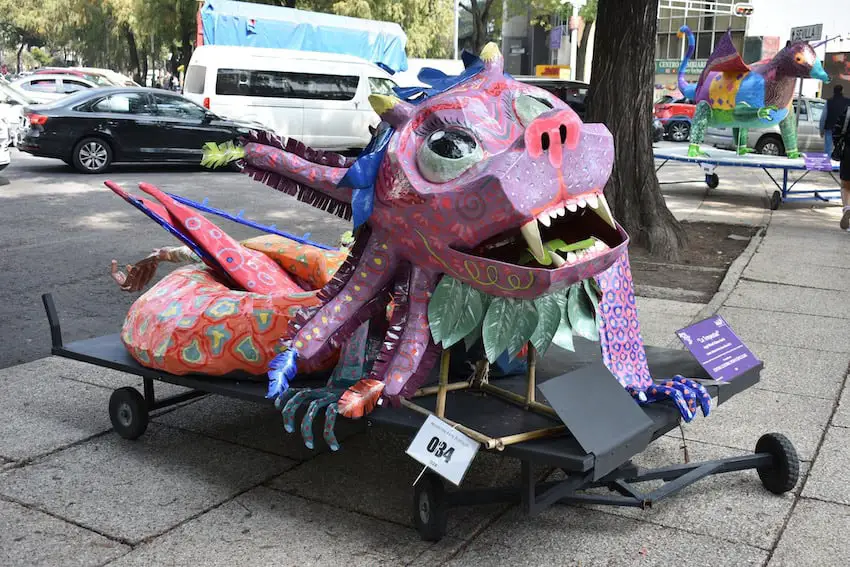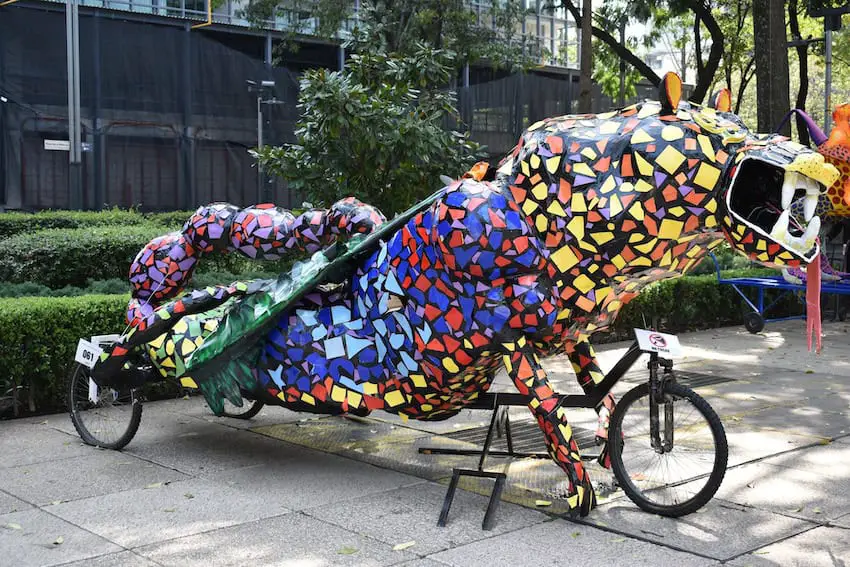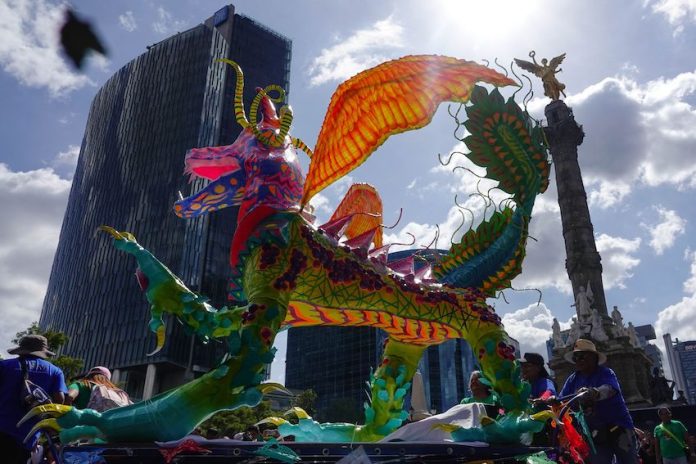On Oct. 19, Paseo de la Reforma hosted the much-anticipated Alebrijes Parade organized by the Museum of Popular Art (MAP), which saw 185 gigantic alebrijes — artisanal sculptures of fanciful creatures — stroll down Mexico City’s most prominent avenue.
If you missed the parade, the alebrijes will remain on display along the sidewalks of Paseo de la Reforma until Nov. 3, from the Angel of Independence to the Estela de Luz monument.

The parade
City officials reported that over 630,000 people gathered along Paseo de la Reforma to witness the MAP’s 16th edition of the parade.
The show began at noon on Oct. 19, with nearly 200 gigantic alebrijes journeying through downtown Mexico City. The colorful sculptures were created by experienced master cartoneros and emerging artists from all over Mexico. The states represented in this year’s parade include México state, Mexico City, Guerrero, Guanajuato, Hidalgo, Jalisco, Morelos, San Luis Potosí and Tlaxcala.
The parade also featured regional dances, live music and dance groups.
The MAP hosts an annual award ceremony to recognize the three most impressive alebrijes. This year, the top three winners will receive cash prizes of 70,000 ((US $3,489), 50,000 (US $2,492) and 40,000 pesos (US $1,993), respectively. Furthermore, eleven alebrijes with ‘honorable mentions’ will receive a cash prize of 10,000 pesos (US $498).
What are alebrijes?
Alebrijes are brightly colored Mexican folk art figures, typically made from papier-mâché or cardboard (cartonería). These remarkable figures, which blend features from different animals into fantastical combinations, were born from the imagination of artisan Pedro Linares López.

The story of alebrijes begins like something out of a fever dream — quite literally. In 1936, Linares fell ill and spent months unconscious. During this time, he was visited by extraordinary visions: a donkey with wings soaring through his dreams, a lion sporting a dog’s head, and a rooster crowned with bull’s horns. Upon recovering, he brought these mysterious creatures — which he named alebrijes — to life using the traditional technique of cartonería.
While Linares had been crafting these magical beings for decades, it wasn’t until 1975 that his work captured global attention. British filmmaker Judith Bronowski created a documentary about his craft, catapulting him to international fame.
Today, alebrijes stand as more than just art pieces. They’ve become a beloved symbol of Mexican creativity and imagination, reflecting the country’s rich biodiversity through their diverse forms.
With reports from Excélsior
